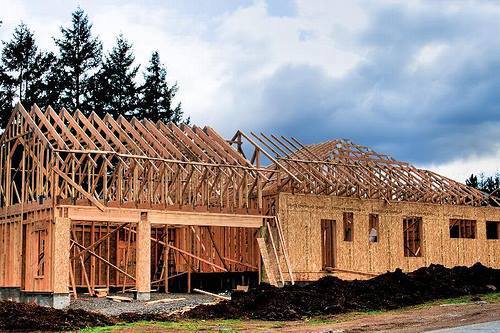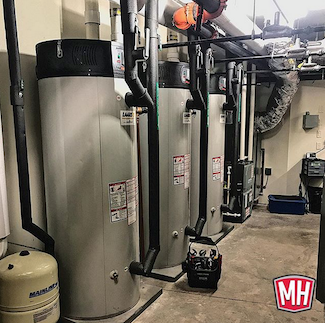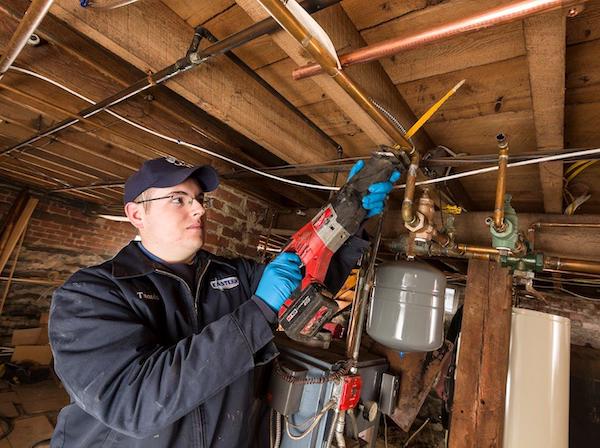The Coronavirus, unrest in the Middle East, the impeachment process, and the presidential election later this year all have had or can have an effect on the markets and people’s confidence in the new year. From everything I’ve heard, the economy still continues trending up, albeit at a bit of a slower pace for 2020 Read more
2020 construction forecast

The Coronavirus, unrest in the Middle East, the impeachment process, and the presidential election later this year all have had or can have an effect on the markets and people’s confidence in the new year. From everything I’ve heard, the economy still continues trending up, albeit at a bit of a slower pace for 2020.
“With the exception of the unknowable effects from election events, we see continued moderate GDP growth with very little likelihood of recession in the near term. From a macro-economic perspective, we see 2020 will be much like 2019, but with the implementation of the United States-Mexico-Canada Agreement (USMCA) and the de-escalation of the trade war with China, we anticipate less uncertainty and less volatility,” says Bruce Carnevale, President & CEO, Bradford White Corporation.

According to the National Association of Homebuilders (NAHB), although the economy is slowing slightly, the risk of a recession is low and remodeling should keep pace with inflation into 2021.
“On balance, we are optimistic, and 2020 being an election year historically supports that view. We expect to see moderate growth and opportunity overall,” says Bill Gray, president of Uponor North America.
At this point when the economy seems to be relatively healthy, you almost hate to bring up the “R” word, but Gray says that with commercial construction flat to slightly up currently, a looming recession depends on owner and builder confidence—with development times, size of commercial projects and long lead times to completion increase risk as we move into 2021 and beyond.
Residential is trending upward, says Gray, which is balanced by affordability and consumer debt issues. Commercial is at least holding its own or up slightly from one month to the next. “So confidence is good because of all the projects in the funnel. But if people start to see storm clouds, post-election, that confidence could weaken substantially and quickly, and 2021 could become a challenging year for our industry,” says Gray.
“But even so, we expect more of a correction than a sharp downturn. I state the above with the proviso that the emergence of coronavirus is a threat, with new information surfacing daily. We are a long way from knowing what the impact on 2020 and beyond will be,” continues Gray.

(PRNewsfoto/Fairmont Supply Company)
How does the upcoming presidential election affect the economy? “The lead up to the election might affect projects not yet funded, especially projects with government funding sources, but I don’t anticipate any effect on private sector projects—those might be influenced by the stock market and interest rates, both of which are currently favorable,” says Mark Evans, Sr. Director of North American Sales, Viega.
 According to Carnevale, the economy so far seems to have shrugged off the partisan bickering in Washington. “Favorable tax policy had a positive impact on the overall business environment, but we believe that regulatory relief provided an even greater level of economic stimulation. Increases in business taxes or regulatory burden would have a negative impact on overall business performance, investment, and the economy in general.”
According to Carnevale, the economy so far seems to have shrugged off the partisan bickering in Washington. “Favorable tax policy had a positive impact on the overall business environment, but we believe that regulatory relief provided an even greater level of economic stimulation. Increases in business taxes or regulatory burden would have a negative impact on overall business performance, investment, and the economy in general.”
For some, naturally, the economy affects those differently in various segments of the country. For example, with a good balance of work across residential, healthcare and commercial sectors, J.C. Cannistraro, Watertown, Mass., sees moderate growth in the short term, “The construction market in Boston is still strong and there does not appear to be any slowdown in the next several years,” says Mark Perrone, purchasing manager, J.C. Cannistraro. “Interest rates are still relatively low, and I think if there is an increase, we could see a change in if/how projects are financed.”
Residential Remodeling
According to experts from the National Association of Homebuilders (NAHB) at this year’s International Builder’s Show (IBS), spending on residential improvements will continue to grow over the next two years at a gradual pace, citing increased consumer confidence and demand.

“NAHB estimates that real spending on home improvements will even out at a slower place of about -.6% in 2020 and an increase of 1.2% in 2020,” said Paul Emrath, Ph.D., NAHB’s assistant vice president for Surveys and Housing Policy Research. “The biggest factors prohibiting stronger growth is mainly the ongoing labor shortage.”
And that labor shortage is on the list of “things to keep an eye on” for Viega’s Evans, “Consumer debt is a concern, as is a shift in starts from single-family dwellings to multi-family construction, and a lack of skilled labor in some markets.”
Skilled Labor
The number one business challenge in our industry, says Carnevale, is still the lack of skilled labor. “The trades are ‘aging’ and the challenge of bringing young men and women into the trades continues. Many industry organizations are investing time and funding into workforce development and recruitment initiatives, but we still have a long way to go. This is a deeply embedded cultural challenge that will take a significant amount of time to address,” says Carnevale.
To emphasize this concern, according to Stephen E. Sandherr, Associated General Contractors of America (AGC)—in regard to findings detailed in the Strong Demand for Work Amid Stronger Demand for Workers: The 2020 Construction Hiring and Business Outlook Report, co-produced with Sage Construction and Real Estate, “Contractors are very optimistic about demand for construction in 2020,” said Stephen E. Sandherr. “At the same time, many construction executives are troubled by labor shortages and the impacts those shortages are having on operations, training and safety programs, and bottom lines.”
Adapt and Move Forward
One thing is for certain, the companies that can adapt to today’s issues will be at the forefront of today’s modern contracting. How can contractors ready themselves responsibly? Diversification and a focus on improving business processes and systems, says Evans.
Yet, the technology landscape in construction, and every industry for that matter, is constantly evolving. This can be overwhelming since there always seems to be a new software, AI or robot that can do it faster, cheaper and better. “I believe the companies that can embrace this and find the proper balance between people and technology will be the leaders in industry,” says Perrone.
Enhanced training capabilities—video, VR, etc.—remote diagnostic capabilities, which improve the efficiency and effectiveness of the contractor, and high efficiency products that can provide proactive replacement opportunities can all factor into business growth, says Carnevele. “Train with the goal to be the product experts in your trading area, and train to diversify into adjacent businesses which are of interest to and valued by your customers,” says Carnevale.
